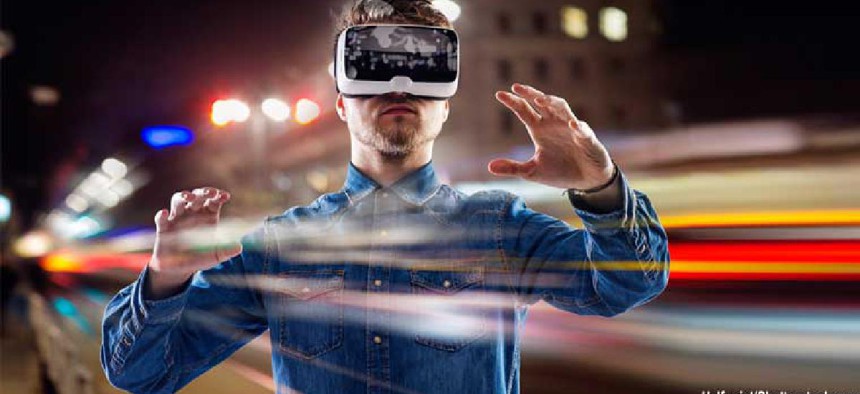How VR helps train teams to battle wildfires

When preparing for emergencies that can’t be economically or responsibly recreated live, virtual reality gives responders the opportunity to experience alternate outcomes and practice real-time communication.
Training to battle a wildfire can be done in a classroom, during a live fire drill and, now, with virtual reality. Particularly for scenarios that can’t be economically or responsibly recreated live, VR provides teams with the opportunity to experience alternate outcomes and practice real-time communication. Historically used to train military personnel in advance of specific missions, military simulation technology has since been adapted by other types of organizations. Smart logistics firm Vitrociset, for example, built the Forest Fire Area Simulator (FFAS) for the Italian Forestry Corps so it can help trainees prepare for the many possible outcomes of a real fire.
To mimic an actual forest fire as closely as possible, existing simulation technology required several adjustments. For example, code originally created to simulate snow was repurposed so developers could create and control an ash layer, show different damage states of charred forests to illustrate a fire’s progress and equip firefighting avatars with chainsaws, rakes and shovels.
Because the resulting simulation takes into account weather and wind patterns, the fire within the simulation will react to changes in the wind. It also shows a forest fire from multiple different vantage points -- from 10,000 feet in the air or 100 yards away in a ground vehicle -- allowing any member of a firefighting team to leverage the simulation technology and improving the decision-making process for commanders.
VR’s ability to immerse the user in a realistic scenario is unparalleled for training. Developers can faithfully recreate scenes of operations with realistic replicas of vehicles and equipment. Trainers and administrators have the flexibility to quickly modify scenarios, control artificially intelligent entities and train on large virtual terrains.
VR simulations also offer opportunities for repetition and variety, allowing teams to practice realistic fire scenarios in every way possible, as often as necessary. This helps to ensure all necessary communications are happening between firefighters, commanders and those supplying support equipment. Users can also replay the virtual scenario they just practiced for debriefing and analysis, allowing them to improve further.
Applying simulation training to more than forest fires
When it comes to deciding whether simulation software is the right training solution, organizations should think through whether or not the training scenario is dangerous or difficult to replicate in the real world. For example, while smaller burns such as house fires are easier to replicate and practice putting out in real time, fires in densely populated metro areas and larger cities with high-rise buildings are more difficult to prepare for.
With resources spread thin, firefighters still need a way to prepare for and prevent all kinds of fires. VR training is beneficial for emergency personnel of all levels, whether front-line training for the first time or a commander refreshing knowledge and skills. Simulation may be seem like a more costly training option, but the repetition and variety of situations it allows as well as the improved communication it enables make it beneficial to all involved.





